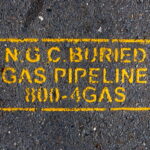The National Gas Company of Trinidad and Tobago Limited (NGC) is joining the effort to stem the decline in mangrove health in Trinidad and Tobago. This week, the company signed a Memorandum of Agreement (MoA) with the Institute of Marine Affairs (IMA), to implement a Mangrove Rehabilitation Project in the Carli Bay/Point Lisas area. This collaboration will promote the restoration and protection of the mangroves in a region that plays a critical role in the country’s environmental and economic landscape. Once characterised by a continuous wetland, the Couva/Carli Bay area has seen its wetland ecosystem fragment into the Couva River/Lisas Bay mangrove forest, the North Claxton Bay mangrove, and the South Claxton Bay mangrove forest. While there has been an expansion of the Couva River/Lisas Bay system, with the mangrove extending onto mudflats, the northern section of the Couva River has suffered from decline, in some areas significant (also described as mangrove die-back).
This troubling trend has persisted for over a decade, with no substantial natural mangrove regeneration observed since 2019. The Institute, with the support of NGC, hopes to reclaim the mangrove in “die-back” areas to enhance the mangrove health and functionality.
In 2005, NGC began a reforestation programme as part of a Certificate of Environmental Clearance requirement for the CIP/BUD pipeline construction projects and the Union Industrial Estate development. The programme was completed this year with the final handover of 315 hectares of reforested land to the Forestry Division of the Ministry of Agriculture.
Read More »






